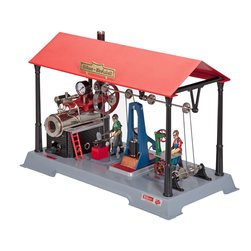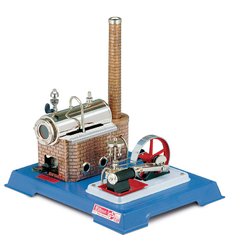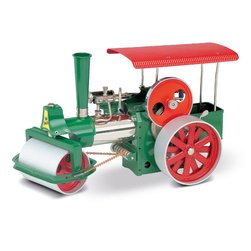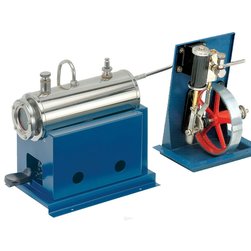Wilesco Steam Engines – Explore fascinating technology
The question “Steam engines - what’s that?” was a question already raised in the classic black and white German film “Feuerzangenbowle” (“The Punch Bowl”), which was set in the late 19th century. In the second half of the 18th century, a new era was set in motion, the dawn of industrialisation. The Scottish inventor, James Watt (1736-1819), improved past inventions and registered his design as a patent in 1769. He continuously perfected his steam engine model and is considered to be the man who discovered the potential of harnessing steam expansion. If energy can be obtained from “water and fire”, energy which can run power drills, saws, trip hammers and organs, Wilesco steam engines are just the visual aid to learn from and play with.
At the start of the 19th century, whole factories were kitted out with a central steam engine. This powered individual machines via transmissions.
Bringing generations together
Wilesco steam engine models follow a long line of tradition, more topical than ever! Heat is converted into mechanical energy and is thus made into usable power. These days, steam power plants use turbines instead of piston-driven machines. The principle of energy conversion, however, remains the same.
Safety first
All machines have the GS sign (means prooved security) or type-tested seal of approval, awarded and monitored by TÜV Nord, an independent testing lab.
Experience
For more than 60 years of production of over three million different steam engine models ensure unbeatable enjoyment. The longevity of Wilesco steam engines also fuels the ambitions and passions of collectors.
Wilesco construction kits give almost every age group the opportunity to build technical systems themselves, regardless how skilled they are .
Wilesco model steam engines: The technology is in your hands - be creative, and have fun!



